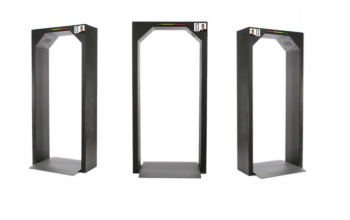A red flag is a necessary precaution when hauling oversized cargo. The load protruding from the truck poses a risk to road users and drivers when driving behind or around the vehicle. The primary purpose of the red flag is to alert other road users of oversized cargo that doesn’t fit perfectly in the vehicle.
Why Should I Use a Red Flag on my Load?
Drivers are mandated to use the red flag whenever the cargo they transport extends more than a meter from the vehicle’s body. Below are a couple of reasons you should use a red flag on the load, and they include the following:
Compliance with the set laws
The rules differ from state to state. However, the Department of Transportation clarifies that flatbed drivers should adhere to the set rules.
Some clients require heavy and oversized loads to be moved from one place to another. To do so, the drivers need to follow the set laws to ensure the safety of all the road users. The drivers understand the necessity of such laws as they aren’t meant to burden them but to ensure that all the highways are safe.
Serves as a warning to other road users
The red flag serves as a warning to road users as they need to approach the truck with caution. The red flag is used in the daytime, and red is the color of choice as it is visible enough for other drivers to see. The flag is attached to the protruding cargo or at the end of the flatbed.
The safety of fellow road users is compromised. The red flag alerts other drivers behind the truck to approach with caution and be cautious while navigating around the vehicle.
Safety of the cargo
The cargo in transit is usually delicate and/or expensive. Most of the loads are from the pipeline, mining, construction, or agriculture. The use of red flags is helpful to the drivers as they can use it as a guide when maneuvering on the roads.
Great caution is required when driving on icy roads, rough terrain, steep and windy roads. The driver needs to be careful not to cause any damage to the cargo they are transporting. To ensure your oversized loads get to their destination in perfect shape, you should work with an experienced company like Osage Specialized Transport with a proven record of delivering loads safely and on time.
When Do I Need One?
The Federal Motor Carrier Safety Administration (FMCSA) requires a red flag on any load that extends to the rear four feet or beyond the vehicle’s body. In addition, a bright red flag is attached at the extreme corners of the cargo over-width or over-length of the vehicle.
The red flag should be clean and measure about 18 in. square or 12 in. square, depending on the state. The overhangs are marked with a red flag during the day and red lights at night. A single flag is attached if the overhang protrudes less than 2 feet. On the other hand, if the overhang is over 2 feet wide, the flags are connected to each rear corner.
In addition to the red flag, some states demand an escort vehicle for every load in transit. Depending on the dimensions of the cargo, the escort vehicle accompanies the flatbed to alert other road users of the shipment, and they may be cautious.
A single red flag is enough when the projecting cargo is less than two feet wide. However, if the load is longer than two feet, the driver must use two flags. In addition to the red flag, a triangular indicator is required alongside the flags.
You should take several considerations when moving your load. For instance, knowing the exact dimensions of your cargo and the weight estimate of the shipment. Transportation is tricky when moving oversized loads like construction equipment, tractors, bulldozers, combined harvesters, mining equipment, and cranes.
The Automobile Carriers Conference (ACC) requires reflex reflectors installed on the new motor vehicles. The reflex reflectors are added in addition to the red flag to enhance the safety of the cargo and give maximum warnings to other road users.
Use professionals instead of going through the hustle of transporting the oversized load yourself. Hauling companies will quickly transport your freight to its destination as they have the necessary equipment and skilled personnel.
What Happens If I Don’t Use One?
If you don’t use a red flag as is required by law, you’ll definitely be stopped by the police. You will be issued a citation or a fine depending on the specific state rules. Therefore, it would be best to learn the basics of transporting oversized loads depending on the form.
The law clearly states that projecting loads more than three feet to the rear or the front should have a red flag on each end of the protrusion. The load is appropriately marked to ensure the safety of other motorists and public property.
During the day, the projecting loads are indicated with red flags, while the cargo is illuminated with red lights during the night. The purpose of the red flags is to alert other road users, prevent accidents, avoid traffic jams, among other potential hazards.
In addition, flatbed drivers should obtain permits for all cargo, not feasible broken down in size or weight for transportation. The whole ordeal may be challenging for you; thus, it would be easier to transport the load with skilled personnel. In addition, the permits allow drivers to cruise in-between states easily.
Drivers avoid getting pulled over and wasting time by adhering to the regulations set by different states. When drivers follow the necessary precautions, their safety and other road users are guaranteed.
There are many laws and restrictions involved in shipping oversized cargo from one point to another. The whole process may be hectic if you are not conversant with the requirements and limitations involved in the shipment. To get your shipment safely to your desired destination, you should consider using professional transportation companies to ensure the process is legal, safe, and prompt.
Related Posts












